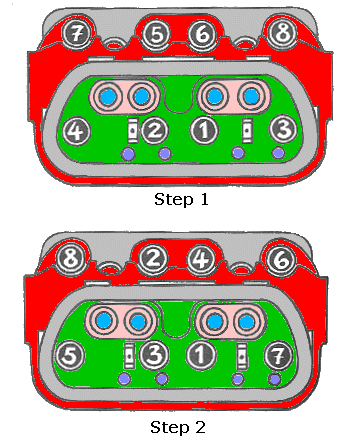Molmeister
Member
- Joined
- Sep 7, 2011
- Messages
- 11
- Reaction score
- 0
Afternoon
Anyone can give me some advice I'd appreciate it....for several months my bus has lacked power, to the point I didn't think I was going to get up the hill up to the Balloon pub outside Malvern...so, I've rolled up my sleeves again to find out what's going on......
Using my compression tool. and having removed all the spark plugs and noted the following readings....
Cylinder 4 - 125 psi (8.8 kg/cm2)
Cylinder 3 - 140 psi (9.6 kg/cm2)
Cylinder 1 - No pressure
Cylinder 2 - No pressure
OK - I appreciate the obvious response it, screw it in tighter on 1&2 but however many times I screw the compression tube in, no joy, no reading at all on Cylinders 1 and 2..I've reviewed the manuals and about from a cylinder head there doesn't appear to be any commonality between these cylinders..
I can sense a Winter project coming on :lol:
Engine is a stock 1600 on a 72 Bay, no modifications (ie Single carb)
Any help/comments/advice would be apprecaited - Thanks
Anyone can give me some advice I'd appreciate it....for several months my bus has lacked power, to the point I didn't think I was going to get up the hill up to the Balloon pub outside Malvern...so, I've rolled up my sleeves again to find out what's going on......
Using my compression tool. and having removed all the spark plugs and noted the following readings....
Cylinder 4 - 125 psi (8.8 kg/cm2)
Cylinder 3 - 140 psi (9.6 kg/cm2)
Cylinder 1 - No pressure
Cylinder 2 - No pressure
OK - I appreciate the obvious response it, screw it in tighter on 1&2 but however many times I screw the compression tube in, no joy, no reading at all on Cylinders 1 and 2..I've reviewed the manuals and about from a cylinder head there doesn't appear to be any commonality between these cylinders..
I can sense a Winter project coming on :lol:
Engine is a stock 1600 on a 72 Bay, no modifications (ie Single carb)
Any help/comments/advice would be apprecaited - Thanks

































